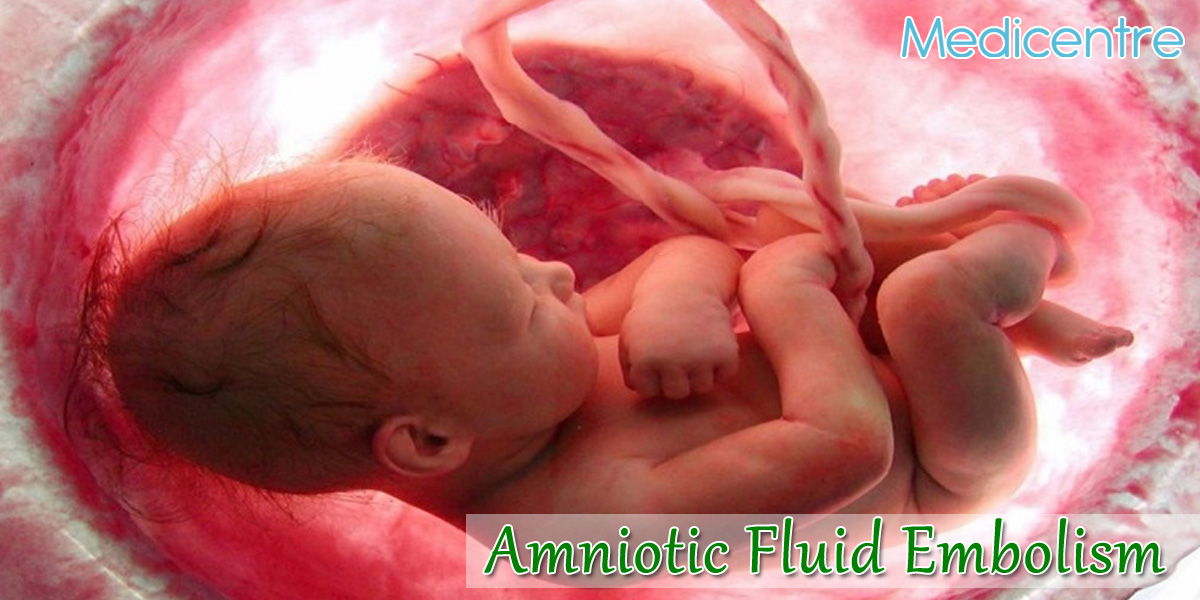

, This translates roughly into a relatively broad range of 1 in 4,500 to 1 in 80,000 pregnancies. As previously enumerated, the incidence of AFE is fortunately low, between 1.9 and 11 per 100,000 admissions for delivery. The reported incidence of AFE varies because of a wide spectrum of presenting signs and symptoms, as well as lack of a standardized approach to diagnostic evaluation of patients with suspected AFE. In this review we discuss the pathophysiology, clinical presentation, and diagnostic and therapeutic considerations associated with AFE.We also highlight the critical care aspects of affected patient care, and focus on the high index of clinical suspicion required to promptly recognize and treat this cause of 10-26% of maternal deaths. Although specialists in obstetrics are the most likely to encounter this clinical entity emergency medicine physicians, surgeons, anesthesiologists, and intensivists should also be familiar with the diagnosis and management of AFE. , Due to the uncommon occurrence of AFE the need exists for a high level of clinical suspicion among practitioners. , The reported incidence of AFE is between 0.001% and 0.013% among patients admitted for delivery. Its first modern description was published in the 1920's with a further report recognizing AFE as a syndrome in the 1940s.

Clinical sequelae of this unpredictable and unpreventable entity are often devastating with significant associated morbidity and mortality. Available from: Īmniotic fluid embolism (AFE) is a rare event that affects parturients during delivery or in the immediate postpartum period.
AMNIOTIC FLUID EMBOLISM SURVIVAL RATE HOW TO
How to cite this URL: Thongrong C, Kasemsiri P, Hofmann JP, Bergese SD, Papadimos TJ, Gracias VH, Adolph MD, Stawicki SP.

How to cite this article: Thongrong C, Kasemsiri P, Hofmann JP, Bergese SD, Papadimos TJ, Gracias VH, Adolph MD, Stawicki SP. Keywords: Amniotic fluid embolism, diagnosis, focused summary, management The key factors for successful management and resolution of this disease process continue to be sharp vigilance, a high level of clinical suspicion, and rapid all-out resuscitative efforts on the part of all clinicians involved in the medical care of the parturient. Special attention is paid to the modern aggressive supportive care that resulted in an overall reduction in the still alarmingly high mortality rate of this devastating entity. In this review the current state of medical knowledge about AFE is outlined including its incidence, risk factors, diagnosis, pathophysiology, and clinical manifestations. However, this rare occurrence carries a high probability of serious sequelae including cardiac arrest, ARDS, coagulopathy with massive hemorrhage, encephalopathy, seizures, and both maternal and infant mortality. With its low incidence it is unlikely that any given practitioner will be confronted with a case of AFE. Source of Support: None, Conflict of Interest: NoneĪmniotic fluid embolism (AFE) is an unpredictable and as-of-yet unpreventable complication of maternity. Stawickiĭepartment of Surgery, Division of Trauma, Critical Care, and Burn, The Ohio State University College of Medicine, Suite West Avenue, Columbus, USA Stawicki 8ġ Department of Anesthesiology, Centre for Palliative Care, The Ohio State University College of Medicine, Columbus, OH, USA Department of Anesthesiology, Srinagarind Hospital, Faculty of Medicine at the Khon Kaen University, Khon Kaen, Thailand 2 Department of Otolaryngology/Head and Neck Surgery, Centre for Palliative Care, The Ohio State University College of Medicine, Columbus, OH, USA Department of Otorhinolaryngology, Srinagarind Hospital, Faculty of Medicine at the Khon Kaen University, Khon Kaen, Thailand 3 Department of Anesthesiology, University of Toledo College of Medicine, Toledo, OH, USA 4 Department of Anesthesiology Department of Neurological Surgery, Centre for Palliative Care, The Ohio State University College of Medicine, Columbus, OH, USA 5 Department of Anesthesiology, Centre for Palliative Care, The Ohio State University College of Medicine, Columbus, OH, USA 6 Deparment of Surgery, Division of Trauma/Surgical Critical Care, UMDNJ-Robert Wood Johnson University Hospital, New Brunswick, NJ, USA 7 Department of Surgery, Centre for Palliative Care, The Ohio State University College of Medicine, Columbus, OH, USA 8 Department of Surgery, Division of Trauma, Critical Care and Burn, The Ohio State University College of Medicine, Columbus, OH, USA Date of Web PublicationĬorrespondence Address: Stanislaw P. SYMPOSIUM: EMBOLISM IN THE INTENSIVE CARE UNITĬattleya Thongrong 1, Pornthep Kasemsiri 2, James P Hofmann 3, Sergio D Bergese 4, Thomas J Papadimos 5, Vicente H Gracias 6, Michael D Adolph 7, Stanislaw P.


 0 kommentar(er)
0 kommentar(er)
